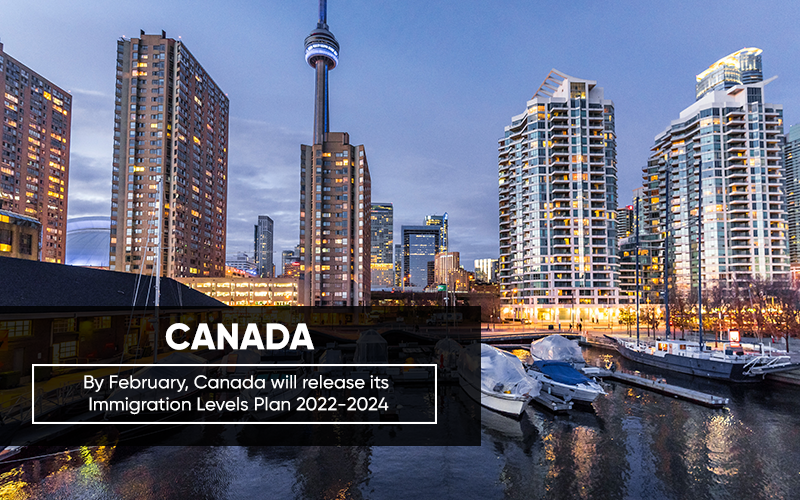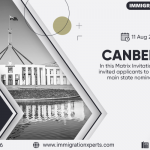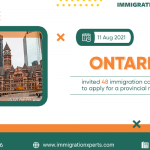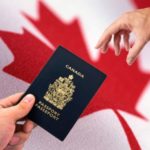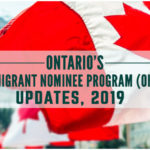ANALYSIS: This will be the first announcement of the Immigration Levels Plan since October 2020.
The announcement will include Canada's immigration goals for this year and the following two years, as well as the number of new immigrants the country plans to welcome through its different economic, family, and humanitarian programs. It will be the first such declaration since Canada surprised the world by announcing in October 2020 that it would aim to accept over 400,000 new immigrants each year in the future, an increase of approximately 40,000 from prior objectives.
The federal government must make this announcement by November 1st of each year, while Parliament is in session, under Canada's principal immigration statute, the Immigration and Refugee Protection Act (IRPA). If Parliament is not in session, the announcement must be made within 30 days of the next sitting of Parliament.
The announcement is generally made by November 1st of each year, but since the Canadian government dissolved Parliament in September for the election, it did not happen in 2021. On November 22nd, a new session of Parliament began following the election.
Parliament sat for 19 days before taking a vacation. It will reconvene on January 31st, which means that Immigration Minister Sean Fraser must declare the new levels plan by Monday, February 14th.
It's worth noting that the Canadian government will very certainly present a second tiers plan before November 1st this year. The Immigration Levels Plan 2023-2025 will be announced as scheduled, with the exception of the extremely unusual possibility that the Canadian government decides to call an election for the second year in a row.
Immigration, Refugees and Citizenship Canada (IRCC) expects to welcome 411,000 new permanent residents to Canada this year under the current Immigration Levels Plan 2021-2023. IRCC met its objective of landing 401,000 immigrants in 2021, the largest number in Canadian history. IRCC met the goal last year, despite the adverse pandemic environment, by focusing on transferring temporary residents to permanent status in Canada.
Through Express Entry, the Provincial Nominee Program, and Quebec's programmes, among other pathways, the current strategy expects to welcome 241,500 economic immigrants to Canada this year. This represents 59% of Canada's total immigration objective.
Through the Spouses, Partners, and Children Program and the Parents and Grandparents Program, IRCC hopes to welcome 103,500 family class immigrants. This represents 26% of the IRCC's immigration objective.
The remaining 66,000 newcomers will be accepted to Canada on humanitarian and compassionate grounds, accounting for 15% of the total immigrant objective.
Since the mid-1990s, when the Canadian government opted to focus admissions on economic class newcomers to assist ease the economic and budgetary issues posed by Canada's ageing population and low birth rate, these proportions have remained stable. These proportions are expected to be maintained in this year's plans.
However, the overall number of immigrants that Canada decides to target in the coming years may alter. On the one hand, the Canadian government may be satisfied with its already ambitious ideals and elect to stick with them. This would require merely maintaining a gradual increase in annual admissions now that the baseline number of immigrants has surpassed 400,000. Up to 2016, the baseline was around 250,000 immigrants each year. Another factor to consider is that the Canadian government may prefer to avoid major hikes in order to focus on reducing its backlog, which presently stands at 1.8 million permanent and temporary residence applicants.
Fraser, on the other hand, has stated that, depending on stakeholder input, he is ready to raising the objectives even higher. The minister stated that he will listen to community organizations and businesses to determine if they want to accept more immigrants.
Some may argue that Canada's immigration goals are already high, and that the government should put a stop to any further increases for a variety of reasons. Backlogs must be reduced, towns across the country face housing affordability concerns, and historically, admitting immigrants during economic downturns has harmed newcomers' employment prospects.
Proponents of higher levels, on the other hand, may claim that greater levels are necessary to promote Canada's post-pandemic economic and budgetary recovery, as well as to ease labor shortages. Higher objectives can also be justified on the basis that they will help IRCC eliminate its backlogs faster. Furthermore, in order to meet the government's aim of resettling 40,000 Afghan refugees, greater targets may be required.
What is clear is that we will not be guessing for long, as the deadline of February 14 is rapidly approaching.
At Immigration Experts, we guide your clients with the best possibilities of moving to Canada (https://www.immigrationxperts.com/canada-immigration/67-canada-immigration-point-system/) with regards to their professional background.
To Stay Updated on Canada Immigration News, Subscribe to Immigration Experts
NEWSLETTER: https://www.immigrationxperts.com/newsletter/
Fill up our Free Evaluation Form and take the initial step towards your Visa and Immigration Process.We are available for ONLINE CONSULTATION!
Contact Immigration Experts for FREE Points-Based Assessment of your profile: Drop us an email at: info@immigrationxperts.com
Give us a call at: +91-9999467686, 0120-6618011, 0120-6618123
Book your appointment with our experienced immigration counselors and solve all your immigration-related queries at the comfort of your home.
We are available on Skype: Immigrationxperts.com
Achieve your Immigration dreams with Immigration Experts

